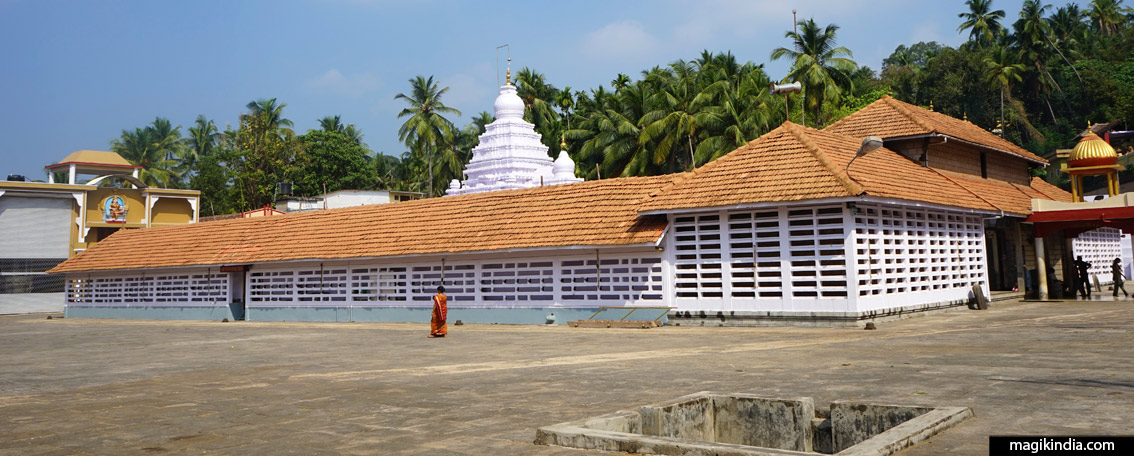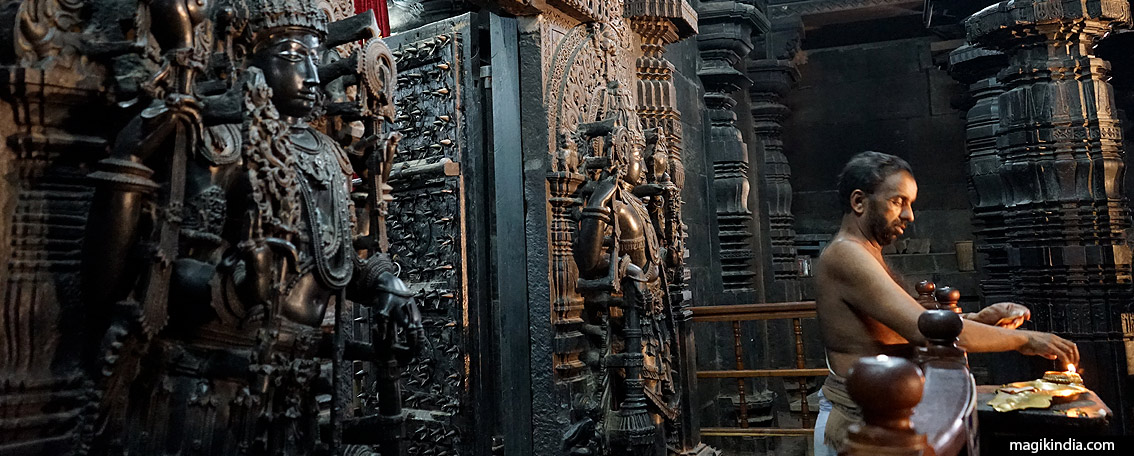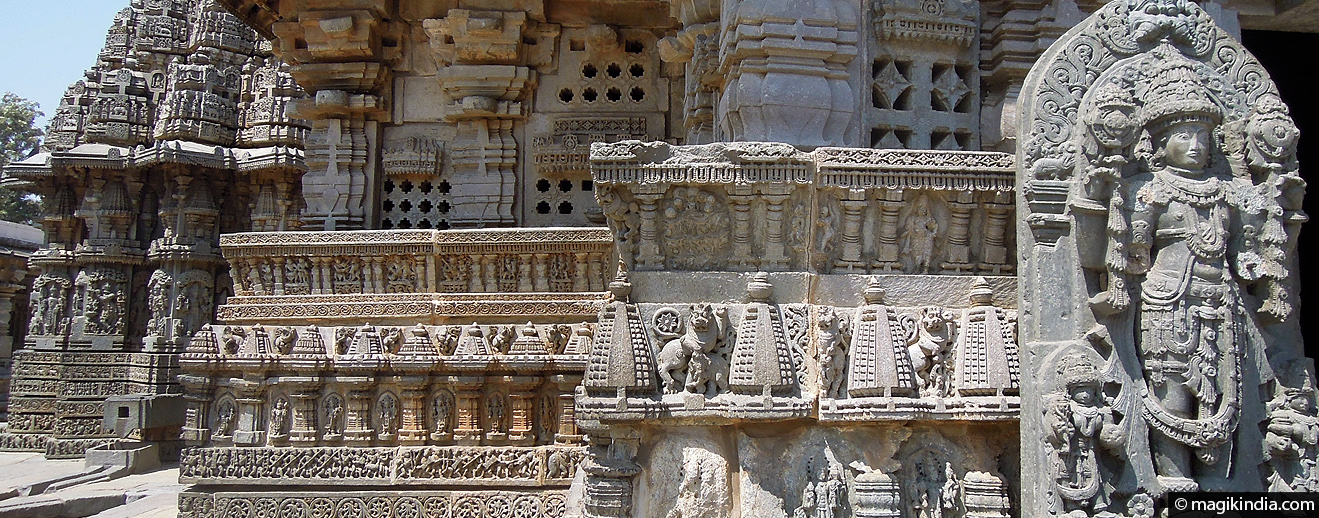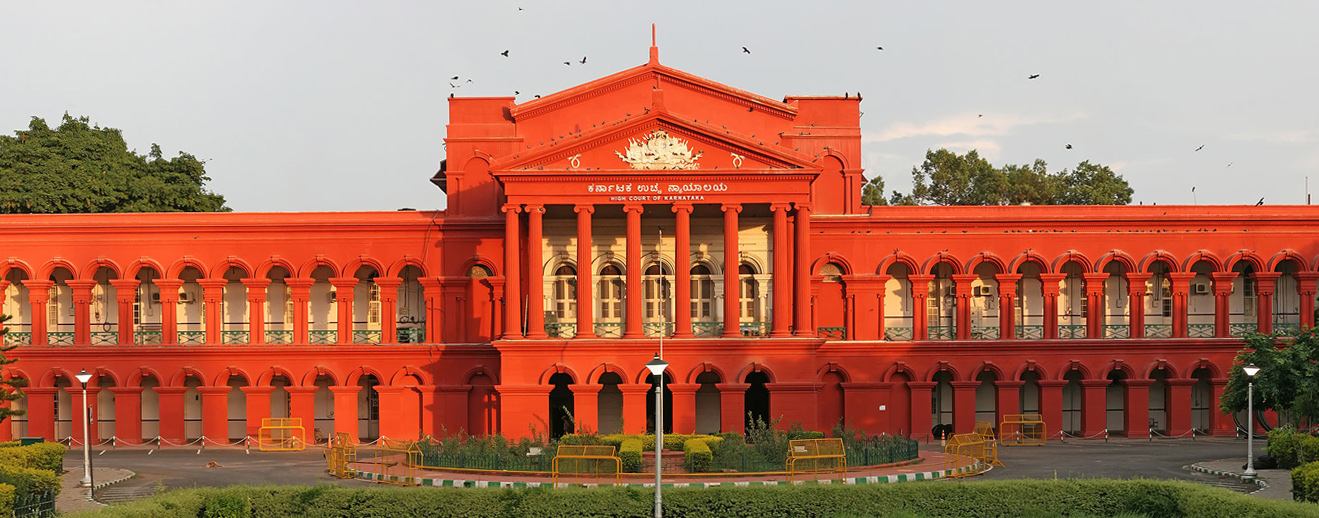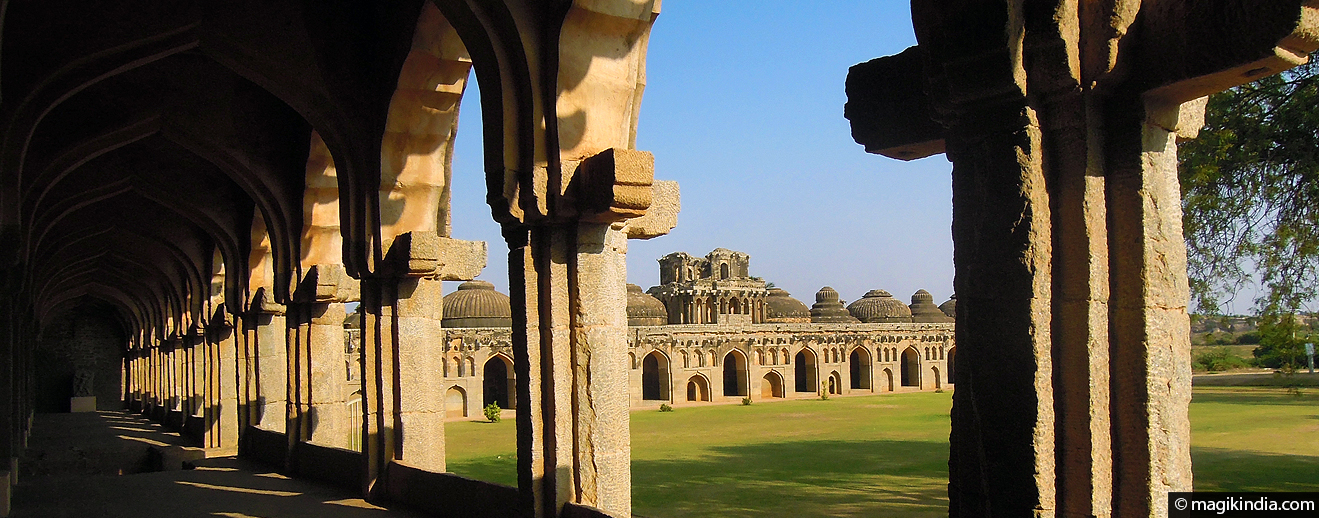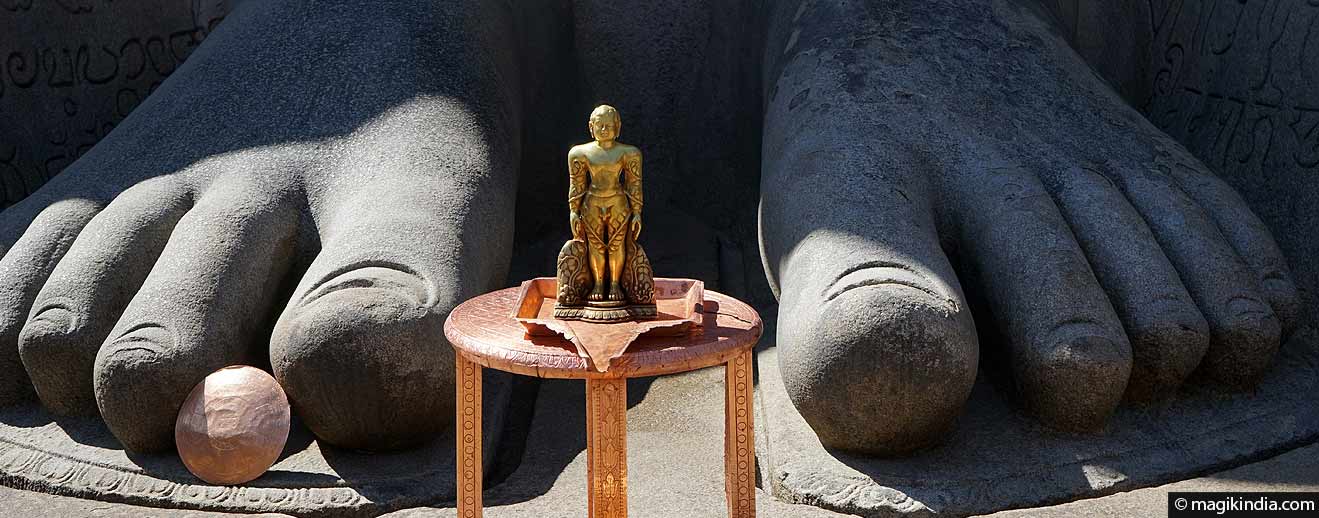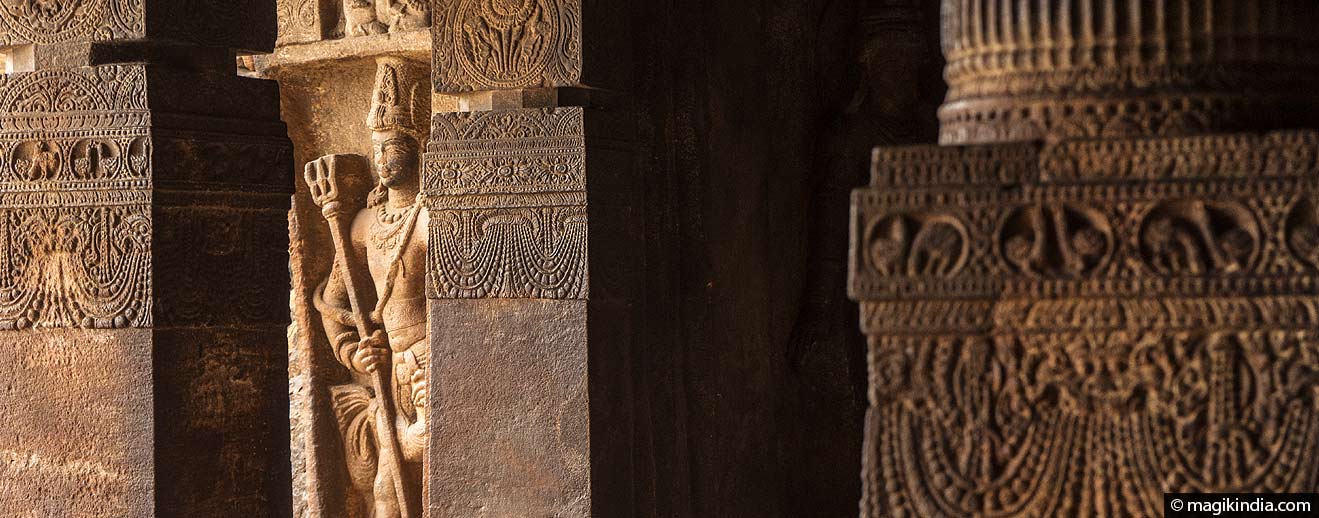
Badami, some of the earliest Hindu temples
Badami, formerly known as Vatapi was the capital of the early Chalukya dynasty, from 540 to 757 AD. It is famous for its beautiful rock-cut caves, which represent some of the earliest known examples of Hindu temples and proves again that Karnataka is one of the most remarkable states in India regarding archaeological treasures.
The Legend of Badami
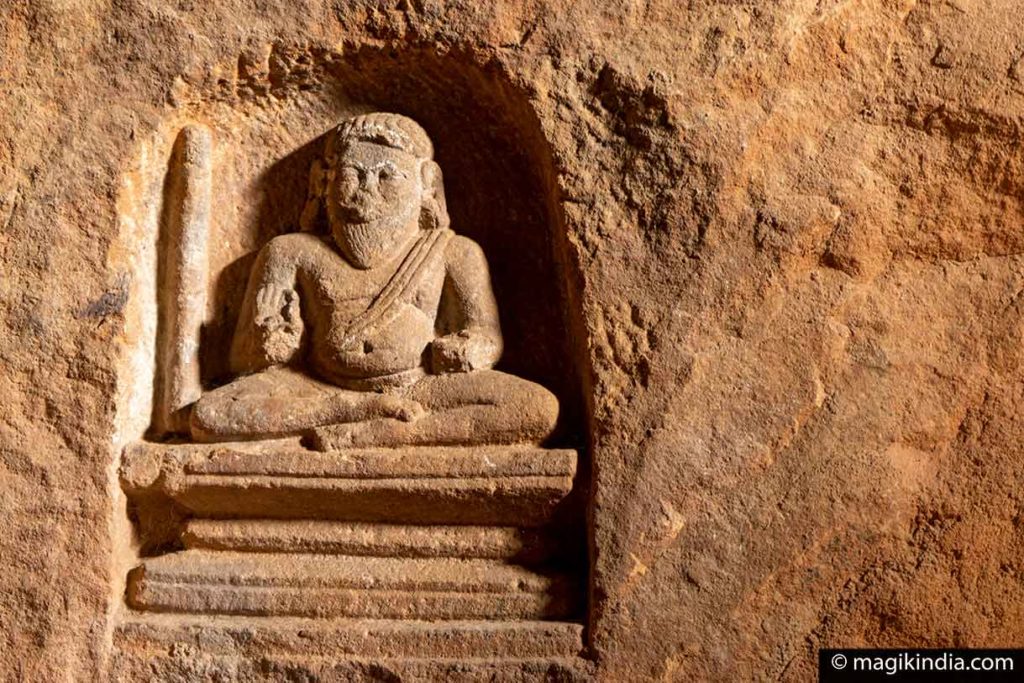
The name Vatapi has origin in the Vatapi legend of Ramayana relating to Sage Agastya.
There were two demon siblings Vatapi and Ilvala. They used to kill all mendicants by tricking them in a peculiar way. The elder Ilvala would turn Vatapi into a sheep and would offer its meat to the guest. As soon as the person ate the meat, Ilvala would call out the name of Vatapi. As he had a boon that whomsoever Ilvala calls would return from even the netherland, Vatapi would emerge ripping through the body of the person, thus killing him. Their trick worked until Sage Agastya countered them by digesting Vatapi before Ilvala could call for him, thus ending the life of Vatapi at the hands of Ilvala. Two of the hills in Badami represent the demons Vatapi and Ilvala.s
It is also believed that name Badami has come from colour of its stone (badam -Almond).
The 4 rock-cut temples
The four cave temples represent the secular nature of the rulers then, with tolerance and a religious following that inclines towards Hinduism, Buddhism and Jainism. Cave 1 is devoted to Shiva, Caves 2 and 3 are dedicated to Vishnu, whereas cave 4 displays reliefs of Jain Tirthankaras.
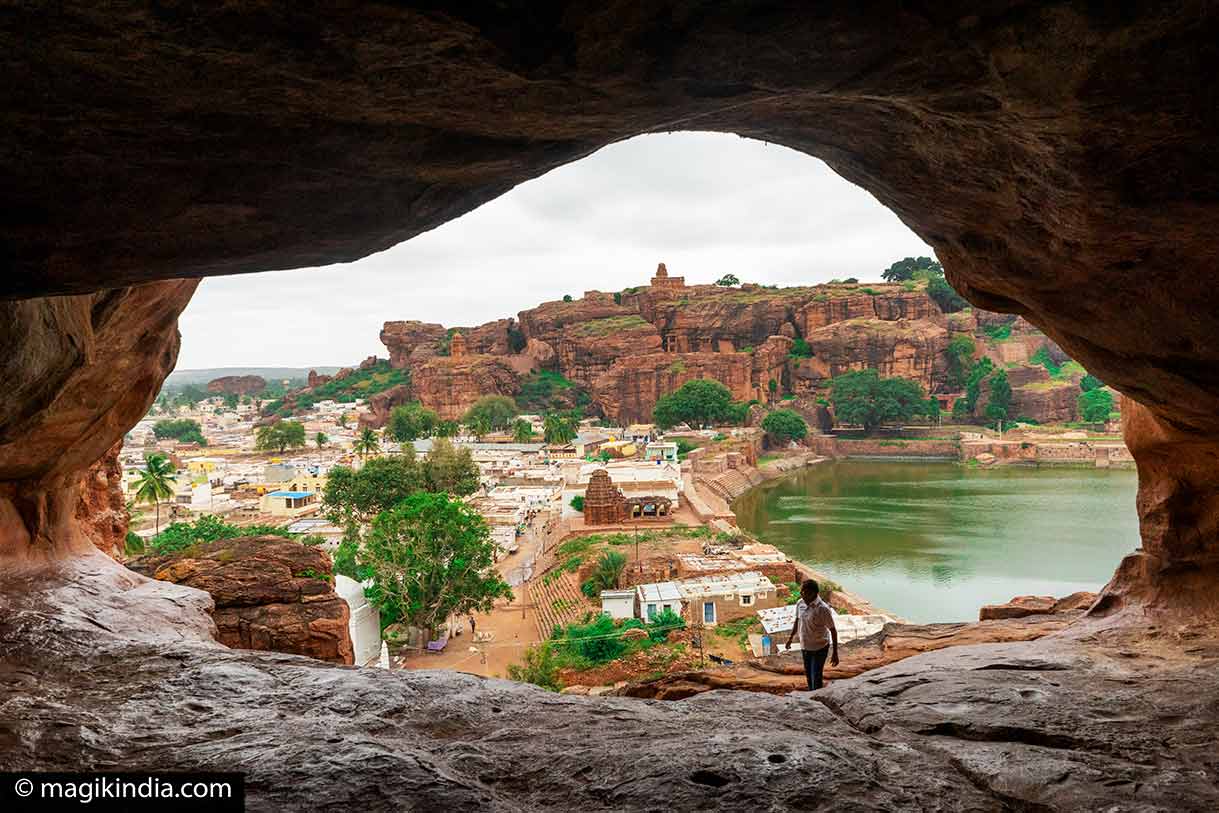
Cave 1 – Shiva
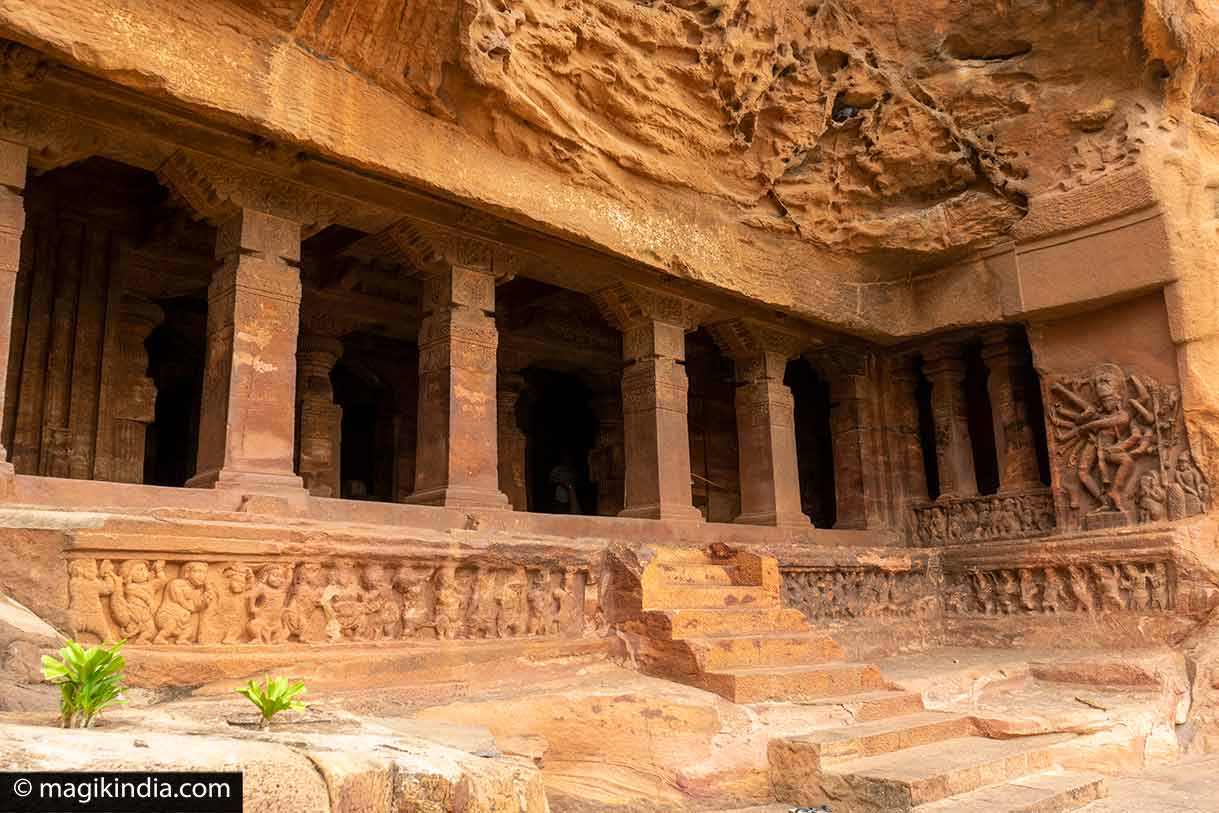
Cave temple 1 may be the oldest in Badami. It is made of red sandstone and has a hall with numerous pillars and a square shaped sanctum, which houses a lingam.
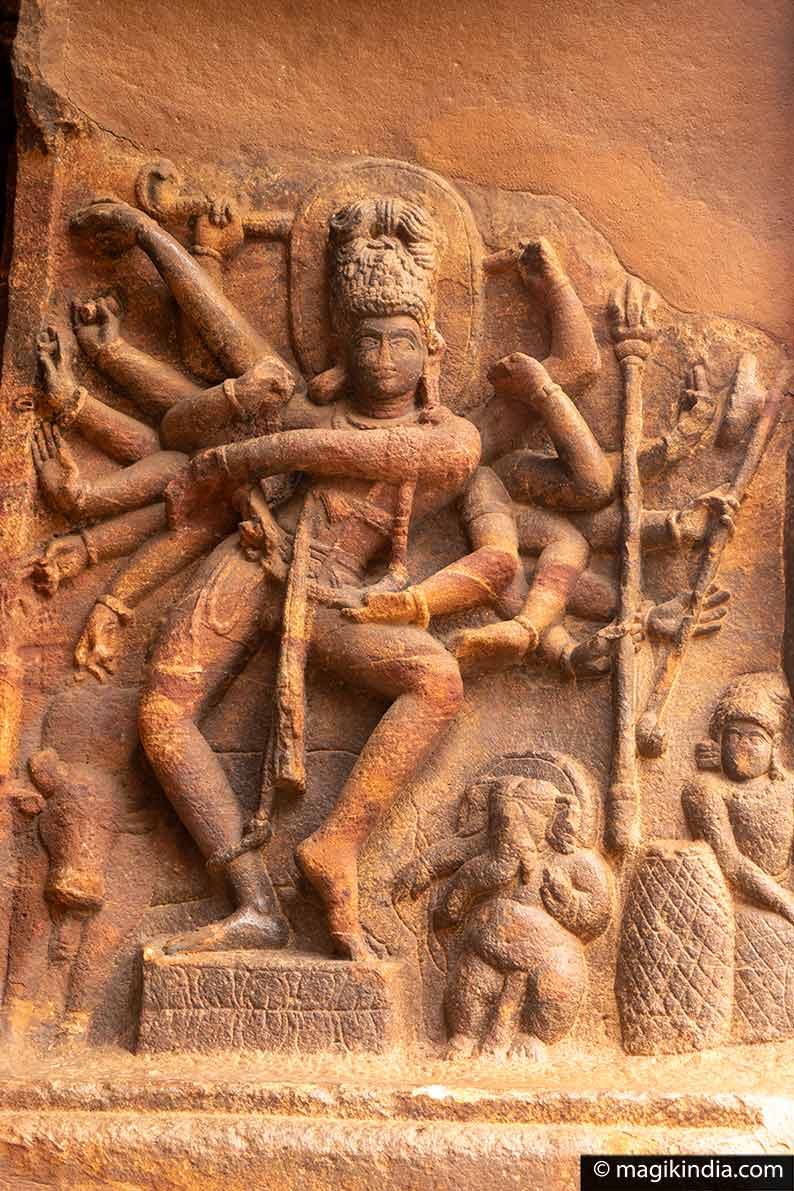
To the right inside is the figure of Shiva of about five feet height with his consort Parvathi and the bull Nandi. There is a neatly carved perfect figure of Mahishasuramardini and several other rock –cut dwarf images of kubja ganas, Nagaraja or snake king, Vidhyadhara couple, etc.
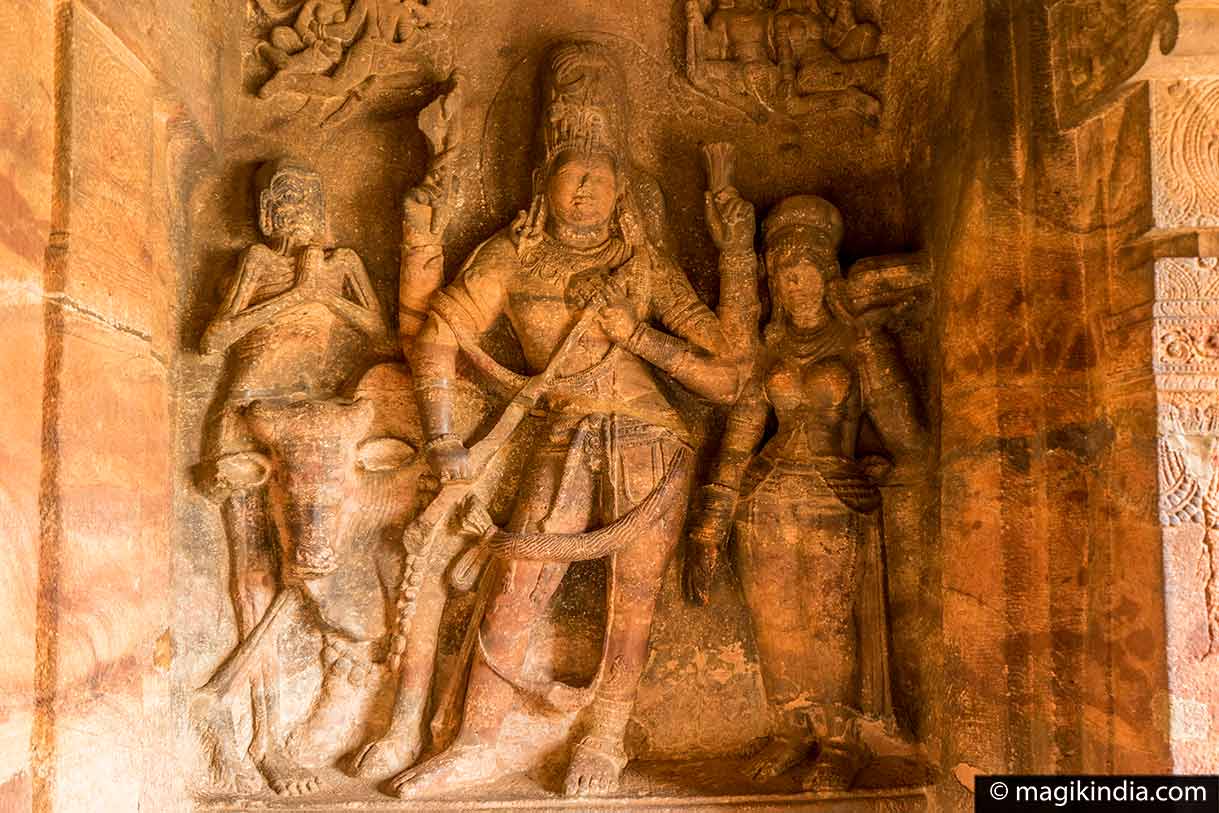
Cave 2 – Vishnu Trivikrama
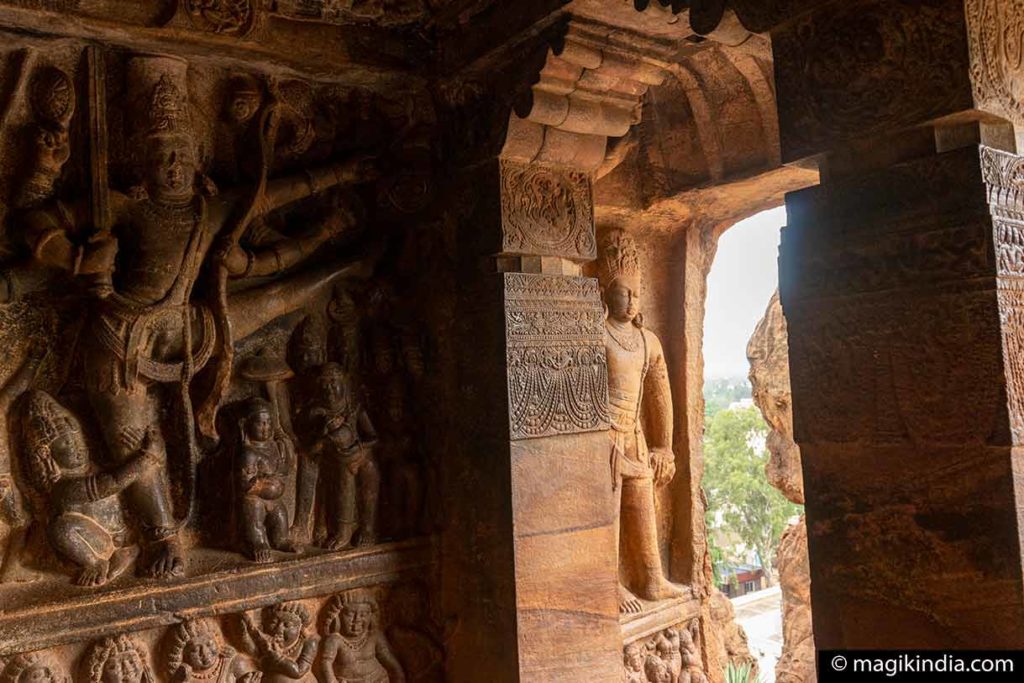
The second cave has on its front two guards or ‘dwarapalakas’ holding lotus in their hands. It is dedicated to Vishnu (as Trivikrama) with one foot mastering the earth and the other the sky.
Vishnu is also portrayed as Varaha and Krishna on East and West walls of the cave. On the ceiling are engraved Ananthashayana, Bramha, Vishnu, Shiva and Asthadikpalakas.
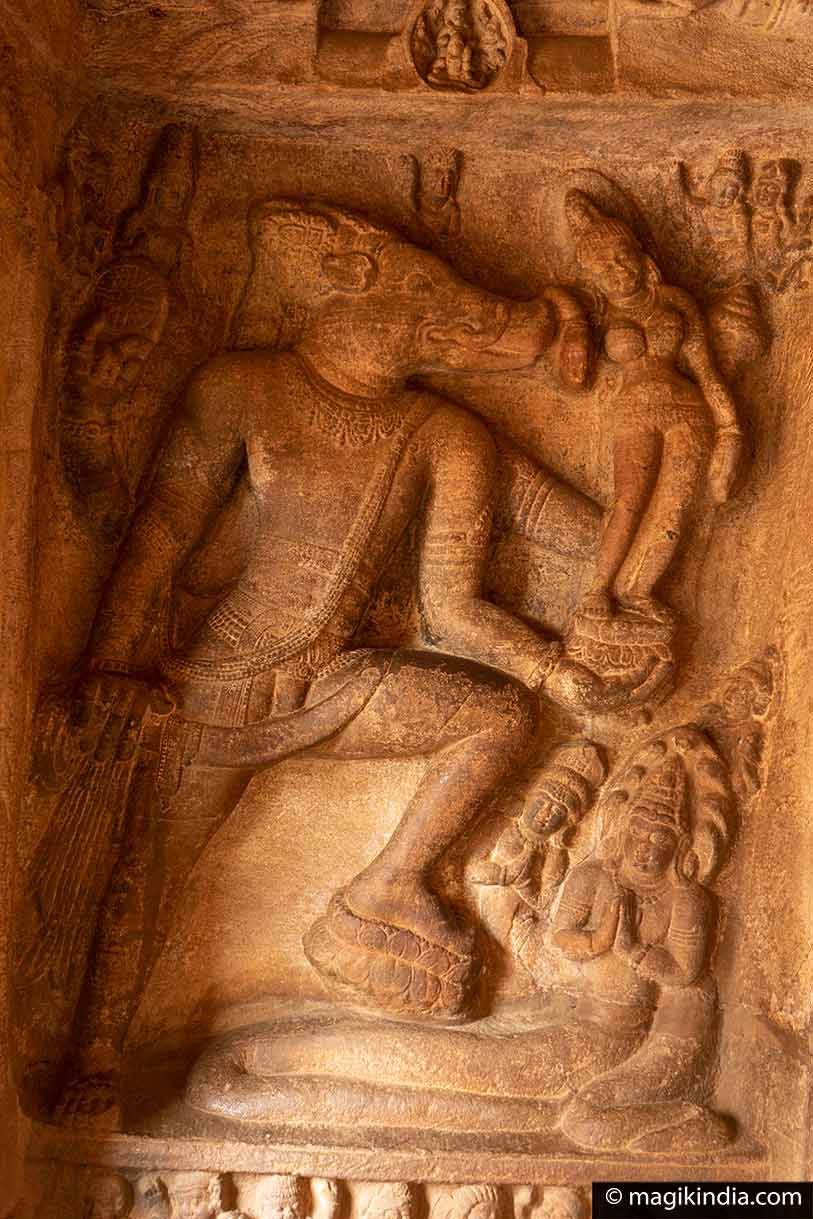
Cave 3 – Vishnu
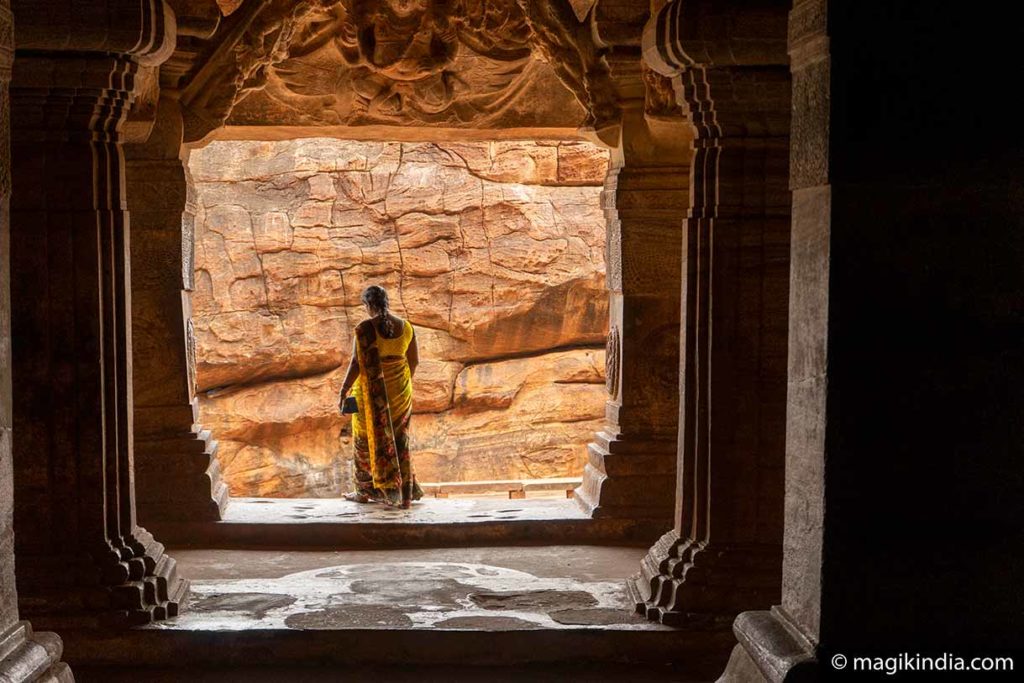
The third cave is also dedicated to Vishnu. It is the biggest cave and has splendid giant figures of Paravasudeva, Bhuvaraha, Harihara and Narasimha.
All these statues are engraved in a vigorous style. There are some paintings on the ceiling and the style indicates maturity but has lost its original dazzling colour. The façade of the cave is nearly 70 feet wide, with carvings of ganas on the plinth.
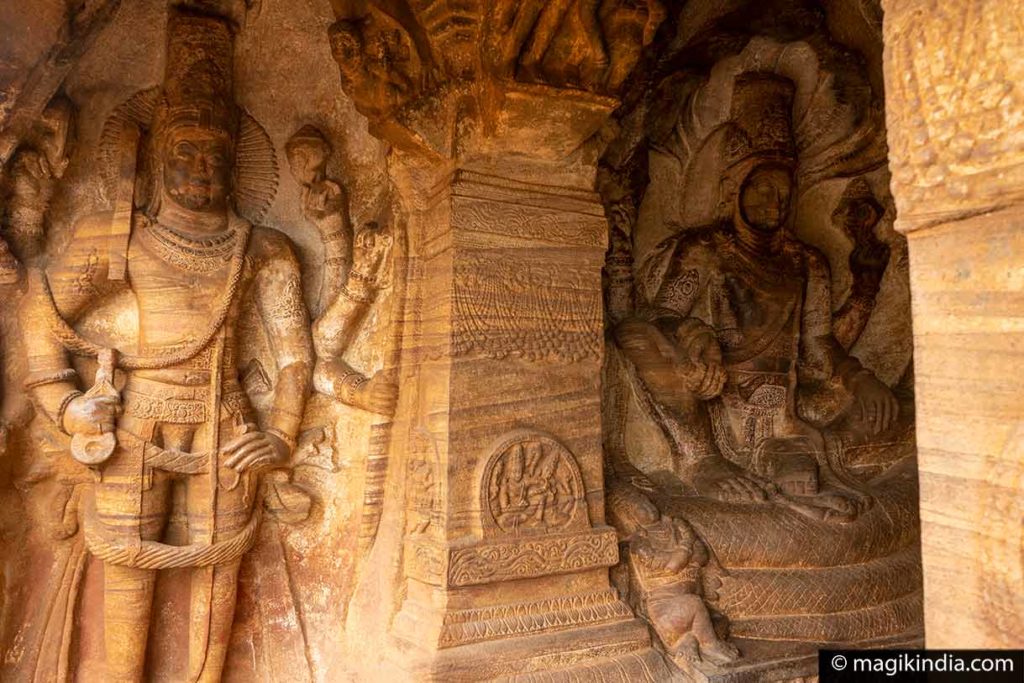
Cave 4 – Mahavira
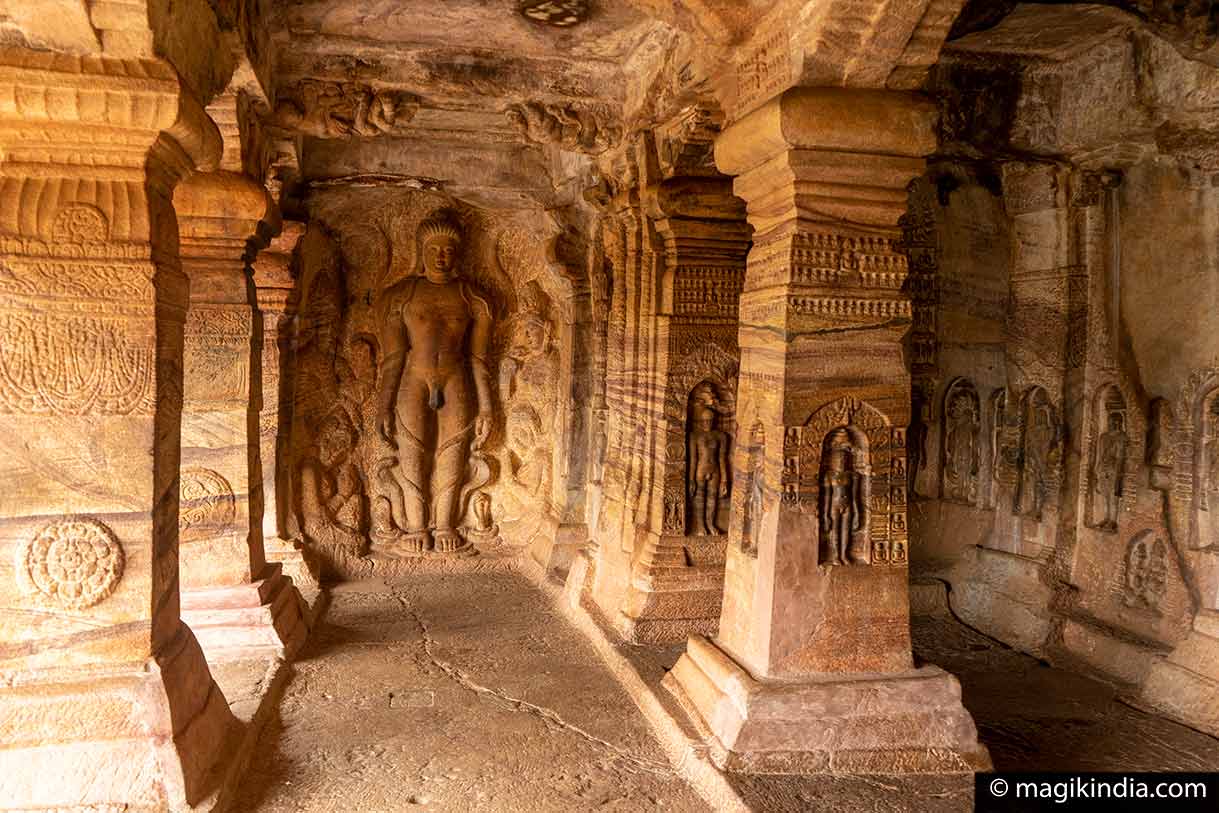
Cave temple 4 relates to the 6th century Jainism. The sanctum sanctorum is adorned by the image of Mahavira depicted in a sitting posture.
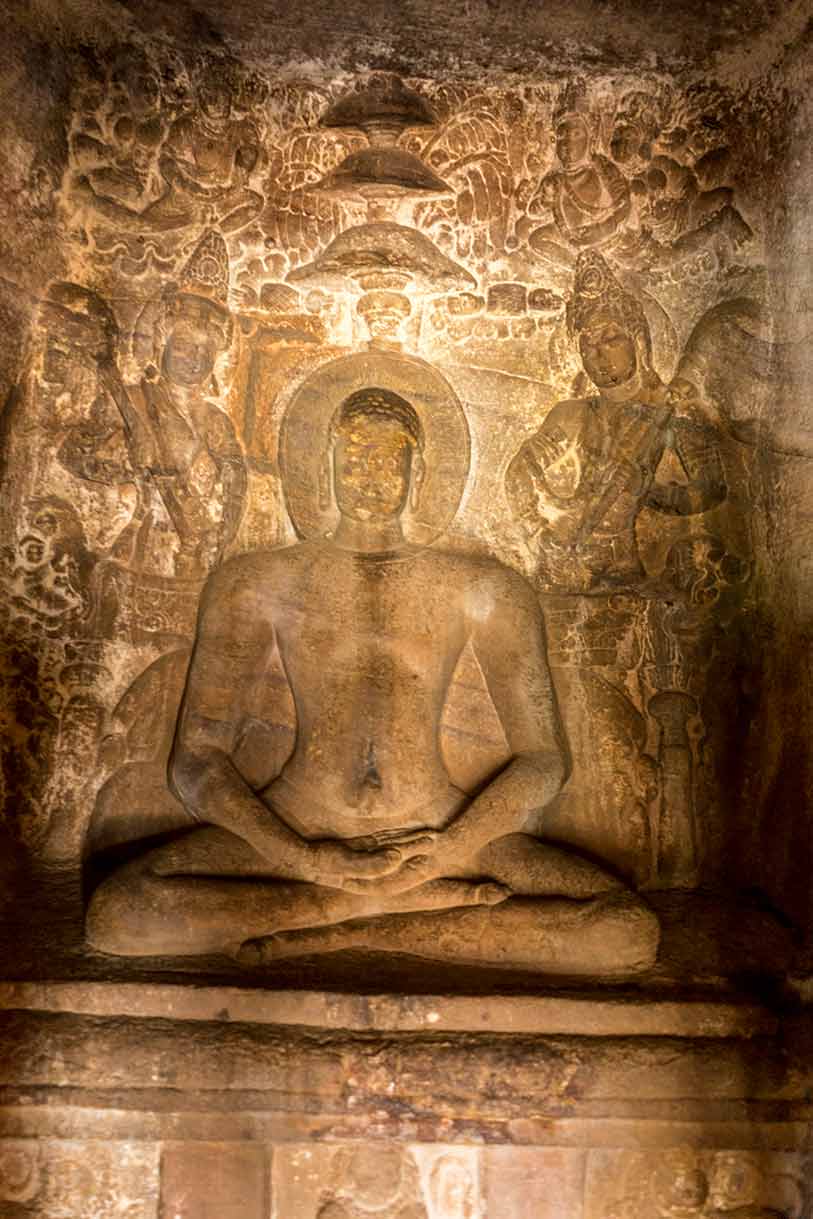
The pedestal contains an old Kannada inscription of the 8th century A.D. Scores of Jaina Thirthankara images have been engraved in the inner pillars and walls. In addition to it, there are some idols of Bahubali, Yakshas and Yakshis. There is also a nice carving of the Tirthankara Parshavnatha (with a serpent at his feet).
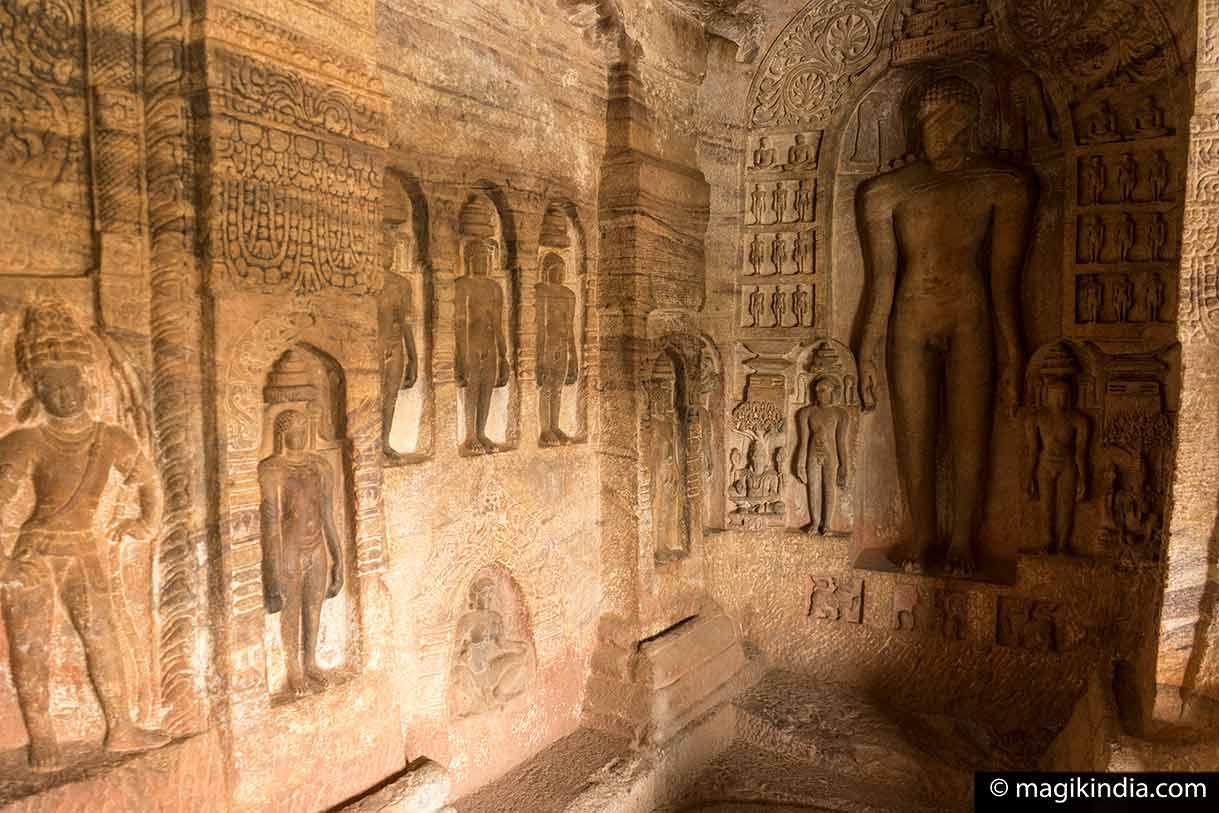
The Bhootanatha group of temples
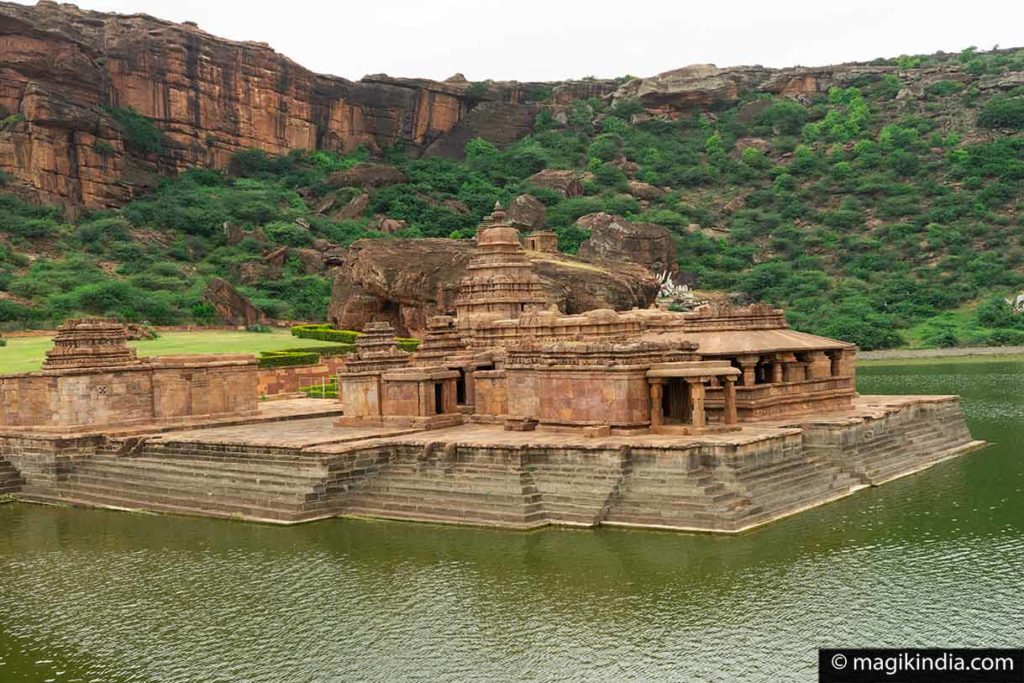
Located on the banks of the Agastya Lake, the Bhutanatha temples are sandstone shrines dedicated to the deity Bhootanatha, a form of Shiva.

It has a superstructure that resembles early South Indian style or North Indian style.The inner shrine and mantapa (hall) were constructed in the late 7th century, during the reign of the Badami Chalukyas. While the outer mantapa, facing the Badami tank, was completed during the rule of the Kalyani Chalukyas of the 11th century. Hence the Bhutanatha temple contain architectural forms from different periods.
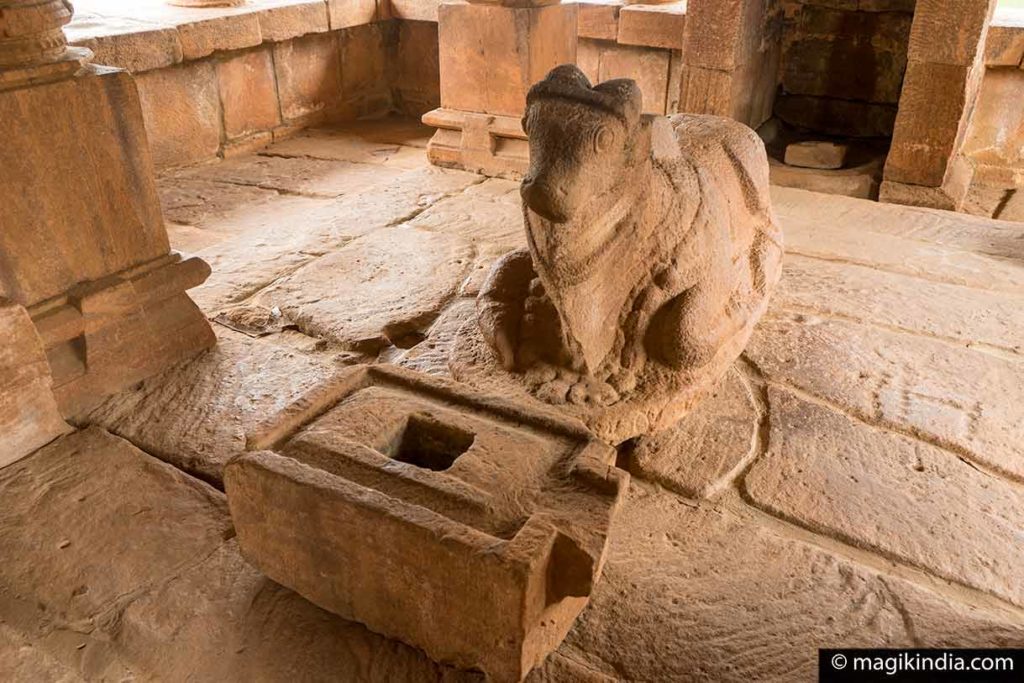
Agasthya lac
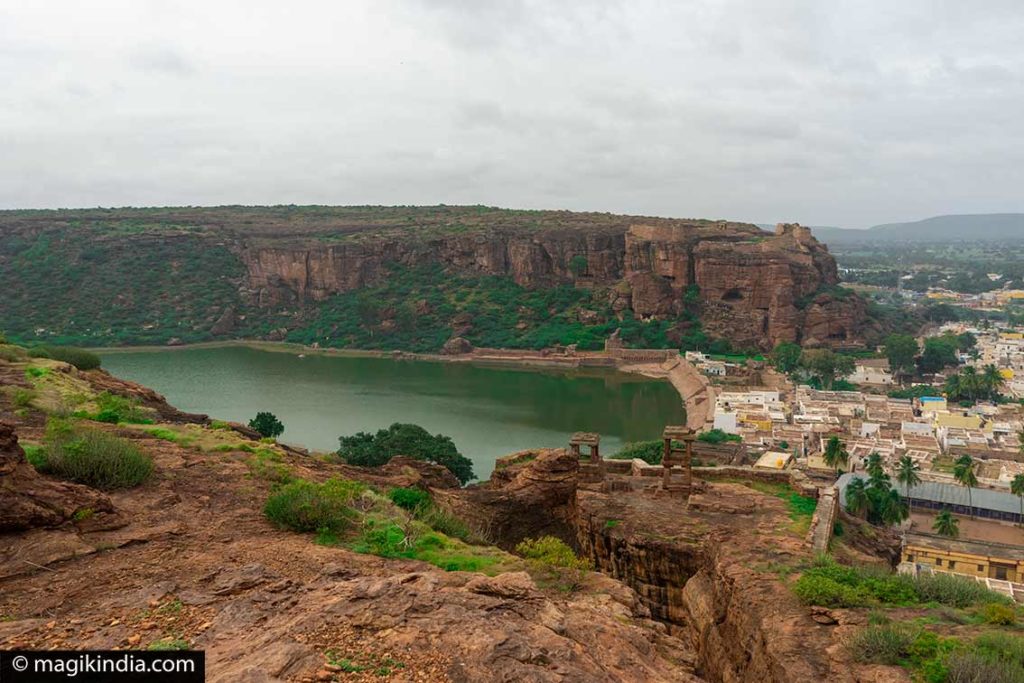
In In between the fort, the Bhootnatha Temples and the caves stands the Agasthya Lake. It is a large tank surrounded by ghats (flight of steps) on each of its side where local women wash their laundry. It is considered as holy and one think it has healing powers ; a dip in its waters is supposed to take away all your sicknesses.
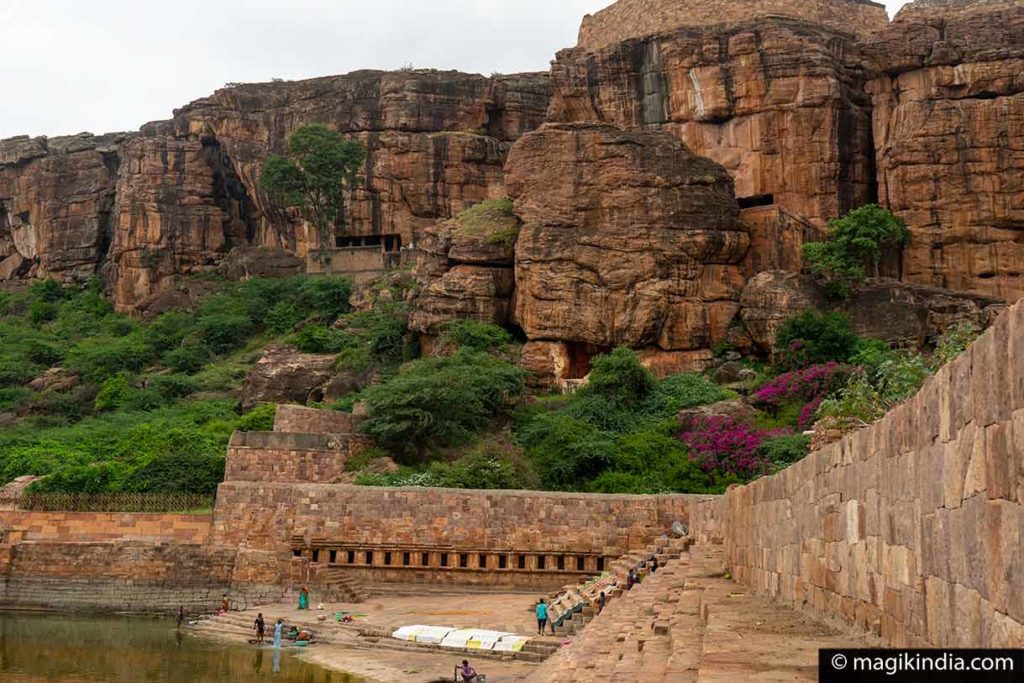
Badami fort
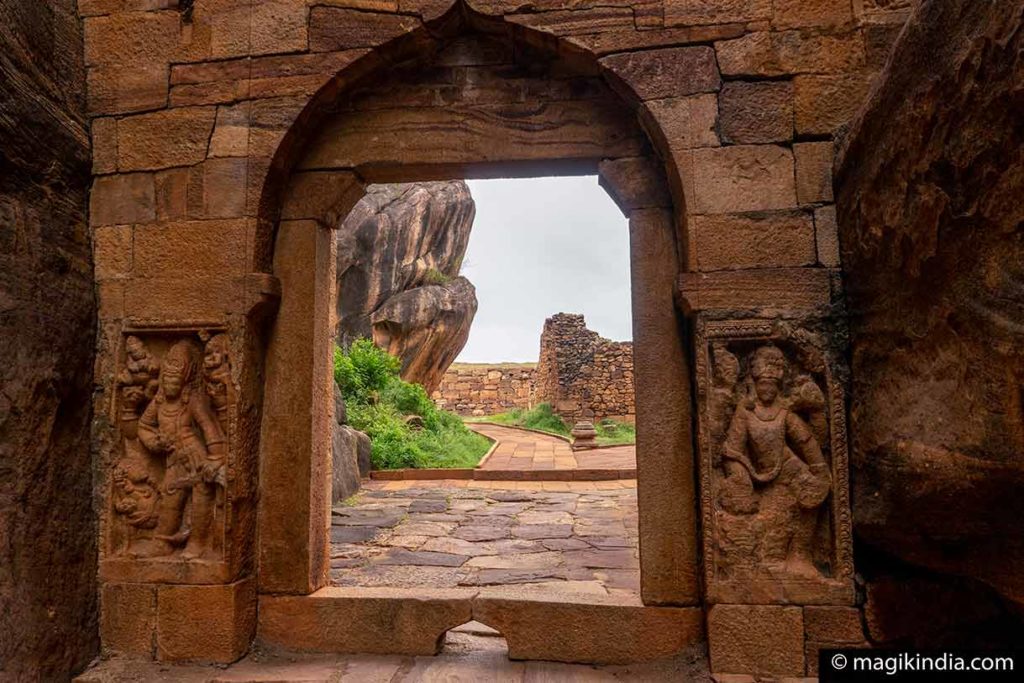
Badami fort is spread over the hills in two parts, North and South, with the Agasthya Teertha in between.The most visited part lies west of the Bhuthnatha temples, atop a cliff right opposite the Badami cave temples. Entrance to this temple is right through the Badami museum. It is a steep climb with many view points and dotted with little shrines. The path is laid with neatly cut stone, the same that adores all the architecture around.
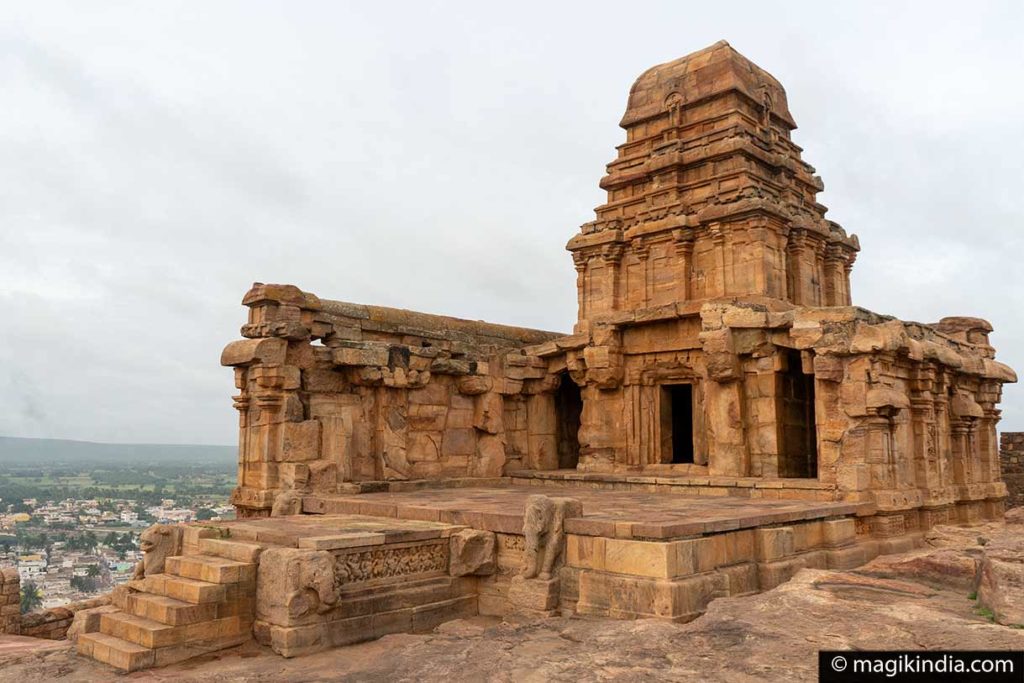
The Badami Fort was the residence of the Chalukyan rulers. The fort was plundered and destroyed by the Pallavas in 642 AD. Much later, when Badami came under the rule of Tipu Sultan, the walls of the fort were rebuilt and several structures were added to the ancient fort complex.
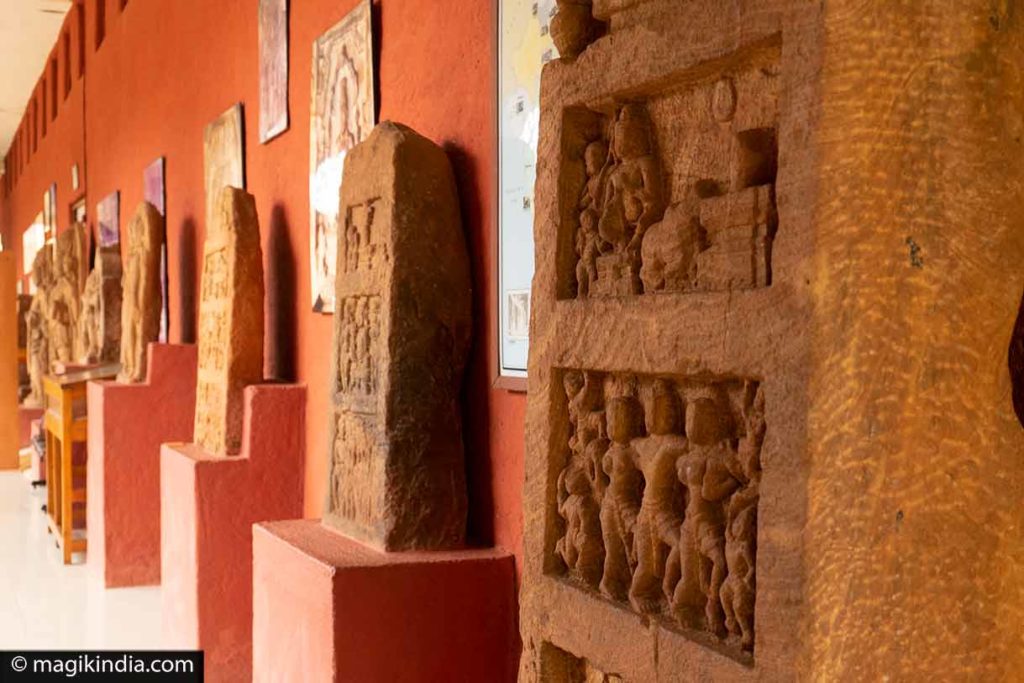
The Badami Museum is located at the foothills of the northern hill containing the northern fort and near the famous Pallava Narasimhavarmman’s inscription. It was established in 1979, as a sculpture shed to collect and preserve explored materials, sculptures, inscriptions, architectural members scattered in and around Badami.The museum mainly comprises of pre-historic stone implements and sculptures, architectural members, inscriptions, hero stones etc. datable from 6th to 16th century AD.

Mahakuta group of temples
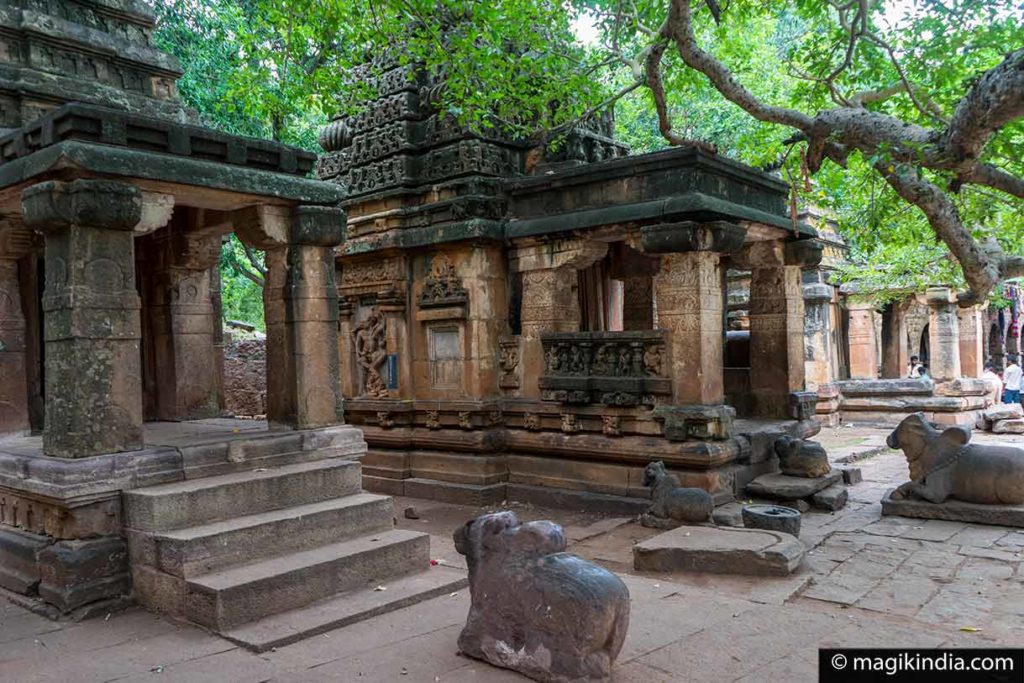
The Mahakuta group of temples is located in Mahakuta, a village in the Bagalkot district at 15km from Badami. It is an important place of worship for Hindus and the location of a well-known Shaiva monastery. The temples are dated to the 6th or 7th century CE and were constructed by the early kings of the Chalukya dynasty of Badami.
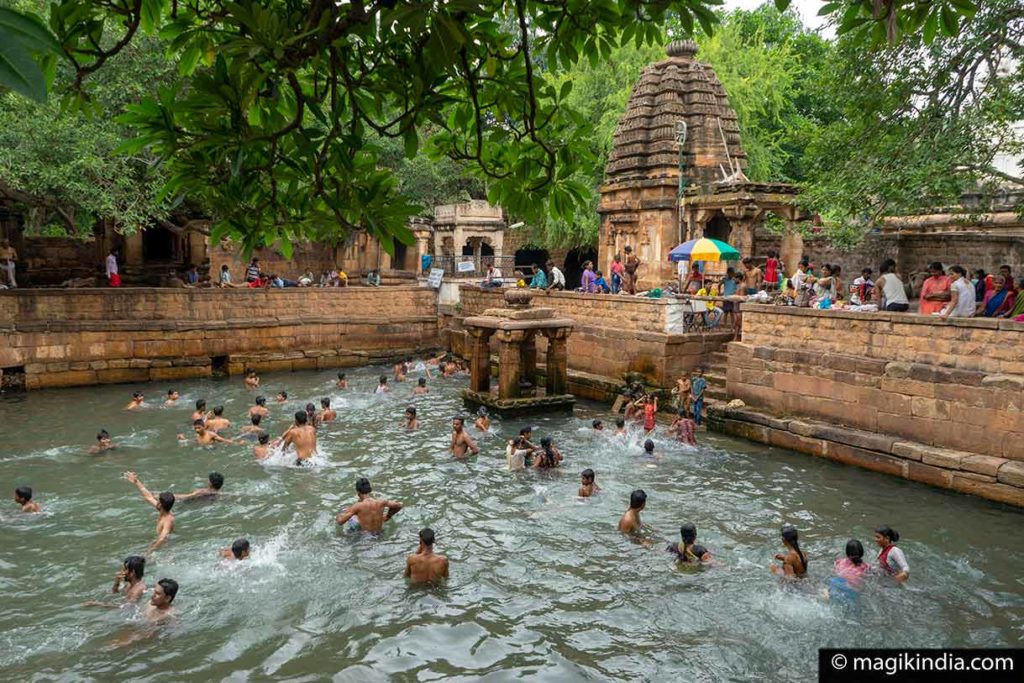
The Karnataka artisans of the 7th century achieved a certain eclectism in their architecture by building south Indian dravida style temples adjacent to north Indian nagara style temples
A natural mountain spring flows within the temple complex and feeds fresh water into a large tank called the Vishnu Pushkarni (“Lotus pool of god Vishnu”) and an ablution tank called Papavinasha Tirtha (“Tank of Ablution”). Among the several shrines in the complex, the Mahakuteshvara temple, built in the dravida style, and the Mallikarjuna temple are the largest.

